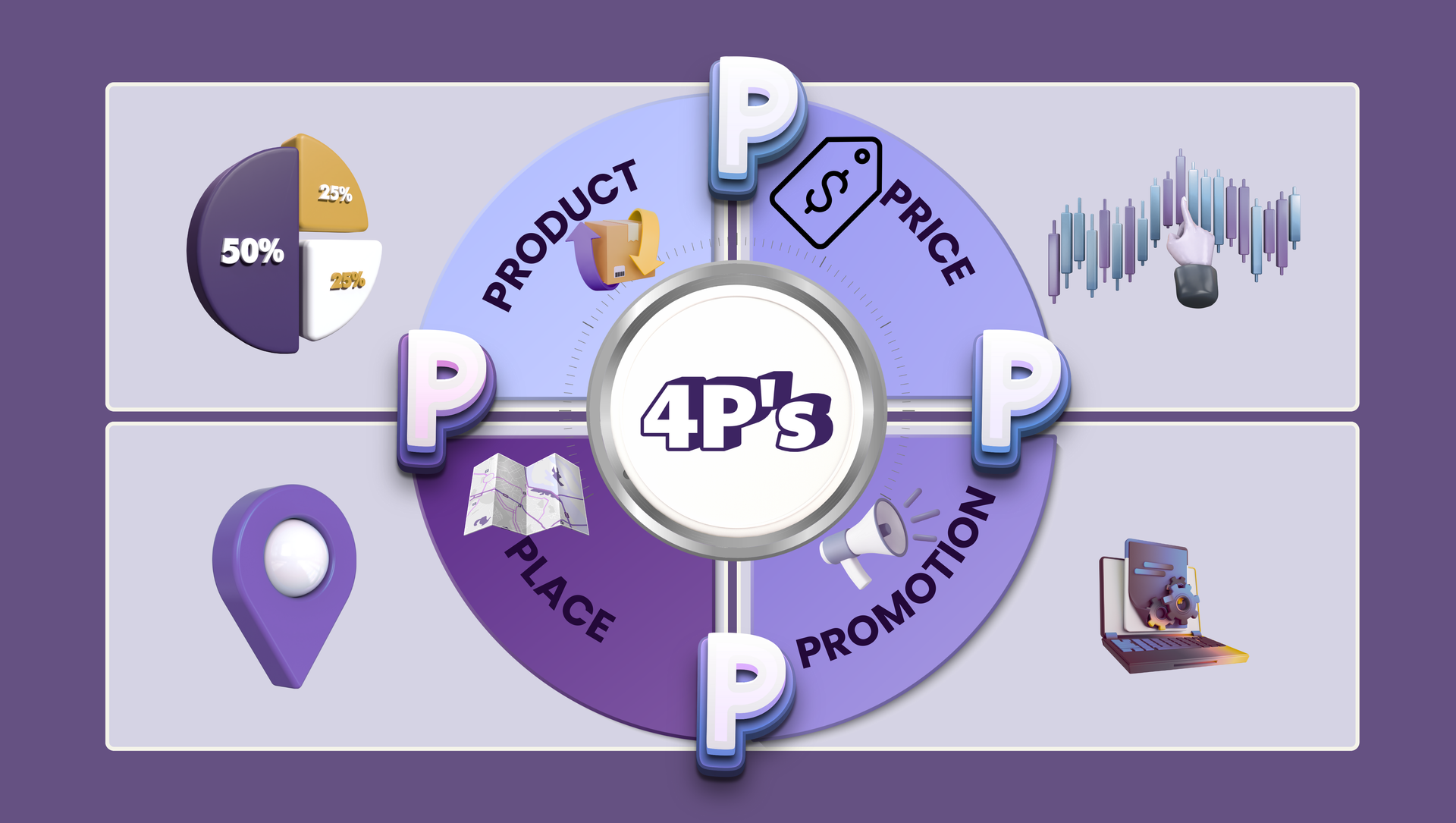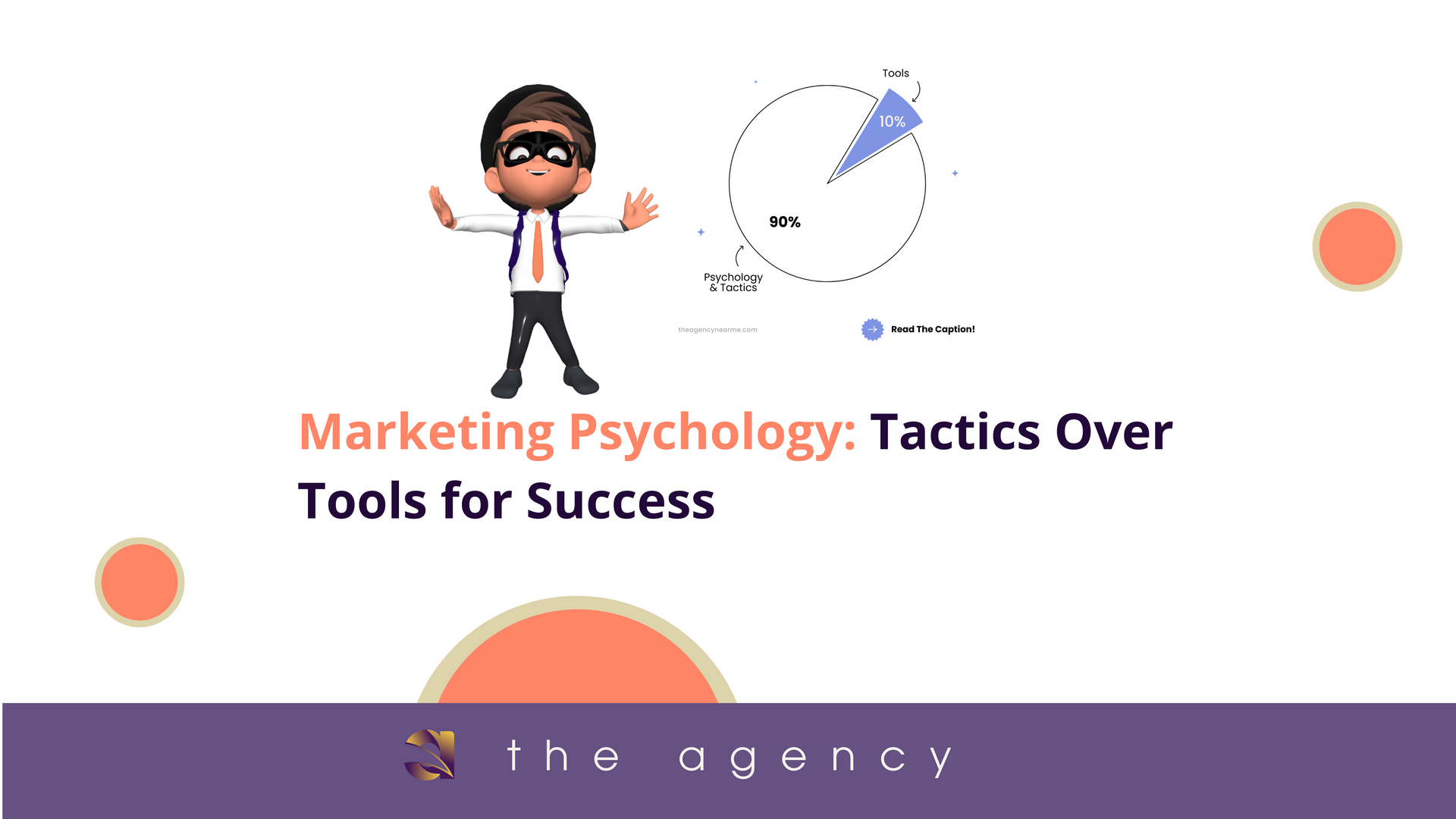Mastering Marketing 4Ps: Conquer Your Market Today
Conquer Your Market: The 4Ps of Marketing

Key Highlights
- The 4Ps of marketing—Product, Price, Place, and Promotion—are essential for successful marketing campaigns.
- Neil Borden came up with this idea, and Jerome McCarthy improved it. This approach is still important in today's marketing plans.
- Each "P" is there to help meet customer needs and support business goals.
- Industries like retail and tech show that using the 4Ps can lead to success in the market.
- The rise of digital marketing offers new ways to enhance the classic 4P strategies.
- Tools like market research surveys can help you plan and improve your marketing mix.
To create a good marketing strategy, you need to know your target audience. It is important to use proven methods, like the 4Ps of marketing. The 4Ps are Product, Price, Place, and Promotion. In today's world of digital marketing, brands need to blend these parts together for strong campaigns. This approach helps all businesses, from small startups to big global companies. They can connect better with their audience and reach their goals. Now, let’s look at how the 4Ps can help improve your market potential.
Understanding the 4 Ps of Marketing
The 4Ps of marketing are Product, Price, Place, and Promotion. These key parts make up successful marketing campaigns. Neil Borden created this idea as part of the marketing mix. Later, Jerome McCarthy made it easier by dividing it into four main parts. This concept uses a managerial approach to basic marketing. It helps businesses match their products to what customers need.
Each "P" looks at an important part of making decisions. This helps you create a clear plan that suits what the market wants. If you are starting a new product, choosing prices, picking distribution channels, or planning promotions, the 4Ps can help you attract potential customers. When you put these parts together well, they form a marketing mix that paves the way for your success.
4P's of Marketing Definition and Overview
The marketing mix was created by Neil Borden. It became popular thanks to Jerome McCarthy. This mix helps managers focus on the 4Ps: Product, Price, Place, and Promotion. The idea of the marketing mix is still important for basic marketing strategies in many industries.
Product means the items or services created to help customers or meet their needs. Price is what people believe your product is worth. It affects how the market views what you sell. Place shows how and where customers can buy your product, making it simple for them. Promotion is about telling customers why they should pay attention to your product.
These parts work together. The marketing mix shows that your pricing strategy should match your product's quality. Distribution must also fit what consumers want. The 4Ps have been important for a long time. They help businesses meet customer needs and build a strong presence in the market.
Historical Evolution of the 4 Ps
The 4Ps of marketing start with Neil Borden's work at Harvard University in the 1950s. He created the idea of the marketing mix, which included many aspects of marketing. Later, Jerome McCarthy made it easier to understand by dividing it into four main parts: Product, Price, Place, and Promotion.
McCarthy talked about his management ideas in his important book, Basic Marketing: A Managerial Approach. This book helped companies make better marketing plans. By paying attention to these key ideas, marketers could be more successful.
The 4Ps were created for regular markets, but you can use them in many fields and at different times. They work well in both physical stores and online platforms. The 4Ps still provide good advice for meeting customer expectations and making strong products. Their ability to adjust shows how helpful they can be, even with changes in consumer behavior and technology.
Deep Dive into Each P of Marketing
Each of the 4Ps—Product, Price, Place, and Promotion—is vital for good marketing strategies. The Product must meet customer needs. Price affects consumer behavior and helps the business make profit. Place is about having your products in the right spots and channels. Promotion is about sharing messages and connecting with people.
When businesses use each part well, they can connect all their marketing efforts. This helps them target consumers, grab their attention, and create strong loyalty with their audience.
Product Strategy: Crafting Your Offer
Defining your product is important for marketing. It can be something you can hold, like a tech gadget, or a service, like a subscription. The product should meet customer needs. A good product strategy begins by understanding your target market. You need to see how your product can solve their problems.
Here are some key questions to think about:
- Who gains the most from this product?
- What makes it different from others on the market?
A good example is Apple. They make the iPhone with unique features. These features attract loyal customers.
Getting feedback from customers is very important. It helps to improve your product ideas and understand what makes your product special. When businesses take this step, they can match their products with what people want. This not only provides solutions but also creates better experiences that build trust and loyalty.
Price Strategy: Finding the Right Price Point
Pricing strategy is very important. It shows how much people value your product and how well it meets customer expectations. First, look at what your competitors charge. Then, find out what your target audience wants. For example, premium items, like Apple’s iPhone, can have higher prices because they offer special features.
Offering flexible choices, such as bundles and subscriptions, can attract different groups of people. When you choose a pricing plan, think about your production costs and profit margins. You can decide to be competitive, focus on value, or set lower prices to begin in the market.
If your price isn't correct, you might lose customers. A wrong price can also lead them to feel that your product isn’t valuable. To make a strong pricing strategy, consider the quality of your product, the needs of your customers, and the overall market. This approach can help you earn a good profit and bring in more buyers.
Place Strategy: Optimizing Distribution
Place strategy is about finding the best ways to get your product to the people you want to reach. This involves using different distribution channels. These can be physical stores or online platforms. It's really important to ensure that your product is easy to find.
Classic brands like Coca-Cola sell their products in physical stores. This helps them be found in many places. Selling online allows them to reach more customers who use technology. You should choose your way of selling based on what customers prefer. Do they enjoy shopping in local stores, online, or through business networks?
Working on Place with the other Ps sends a clear message. Good promotions help people find your products easily. Pricing should feel fair to customers. Choosing the right channels is key to boosting customer engagement and overall sales.
Promotion Strategy: Effective Communication Methods
Promotion helps you connect with your audience. A good promotional strategy has social media marketing, email marketing, and other advertising methods. These methods show the best features of your product.
Social Media Marketing: Use platforms like Instagram and TikTok. They help you connect with younger people.
Email Marketing: Keep your customers engaged with personalized news and offers.
Television Commercials: Use stories to attract a bigger audience.
Print Ads: Target local markets with clear messages.
When you give updates about products or sales promotions, it's important to match your tone and style to your audience. A clear plan combines your messages with decisions about pricing and where to sell. This approach can help you reach your marketing objectives better.
Role of Each P in the Marketing Mix
In the marketing mix, each of the 4 Ps—Product, Price, Place, and Promotion—plays a vital role in shaping your overall strategy.
Product: Your product must not only meet customer needs but also resonate emotionally. This includes considering quality, features, branding, and packaging. A well-defined product sets the foundation for all other marketing efforts.
Price: The price you set influences perceptions of value and accessibility. Competitive pricing strategies can attract customers while ensuring profitability. It's essential to research what your target audience deems acceptable and adjust accordingly.
Place: Distribution channels are crucial in making your product available to customers. Whether online or offline, selecting the right platforms ensures that your product reaches the intended audience effortlessly. Consider factors like convenience and visibility, as these can significantly impact purchasing decisions.
Promotion: As highlighted earlier, effective communication methods enhance visibility and engagement with your audience. The synergy between promotion and the other Ps is essential; for instance, a strong promotional campaign should reflect both the unique aspects of your product and its pricing strategy. Tailor your messaging across all channels to create a cohesive brand narrative that resonates with consumers.
Variations on the Marketing Mix
While the traditional 4Ps model remains a cornerstone of marketing strategy, variations and expansions have emerged to adapt to modern markets. One popular adaptation is the inclusion of three additional Ps: People, Process, and Physical Evidence.
People: In today’s service-driven economy, the interaction between staff and customers can significantly influence brand perception. Training employees to embody the brand ethos ensures that every customer touchpoint builds loyalty and enhances satisfaction.
Process: The process encompasses the operational aspects of service delivery and product engagement. Streamlining these processes can lead to greater efficiency and an enhanced customer experience. From the initial inquiry to the final purchase, ensuring smooth transitions at each stage fosters trust and encourages repeat business.
Physical Evidence: In a world where many purchases happen online, providing tangible proof of your brand’s quality is crucial. This can take the form of user reviews, case studies, or even well-crafted packaging that reflects your brand's identity. As markets evolve, so too must the strategies that underpin them.
Interactive Customer Journeys to Drive Loyalty and ROI
Creating interactive customer journeys is essential for nurturing loyalty and maximizing return on investment (ROI). By mapping out the various touchpoints in a consumer's interaction with your brand, you can identify opportunities to engage and retain customers effectively.
Personalization: Tailoring experiences to meet individual needs can significantly enhance satisfaction. Utilizing data analytics, brands can offer personalized recommendations, create targeted promotions, and send timely reminders, ensuring that each interaction feels unique.
Engagement: Developing engaging content—be it through social media, email marketing, or interactive websites—keeps your audience invested in your brand story.
Promotion: Effective promotion strategies amplify your brand's message and drive customer engagement. Leveraging multiple channels—such as social media campaigns, influencer partnerships, and targeted advertisements—ensures your offerings reach the right audience at the right time. Incorporating storytelling into promotions can evoke emotions that resonate deeply with consumers, enhancing their connection to your brand.
Product: The heart of the marketing mix lies in the product itself. Ensuring that your offerings meet quality standards and consumer demands is paramount. Continuous innovation based on customer feedback not only improves product lines but also demonstrates a commitment to meeting market needs.
Psychological Impact of the 4 Ps on Consumer Behavior
The psychological impact of the 4 Ps—Product, Price, Place, and Promotion—on consumer behavior is profound and multifaceted. Each element influences consumers’ perceptions and decision-making processes in unique ways.
Product: The product forms the cornerstone of consumer expectations. A well-crafted product not only meets functional needs but also embodies attributes like quality, design, and brand identity. When consumers trust a brand's commitment to excellence, they are more likely to experience positive emotions associated with ownership—leading to enhanced loyalty.
Price: Pricing strategies can significantly shape consumer perception. A well-set price point can create a sense of value, either enhancing desirability or leading to perceptions of exclusion. Psychological pricing techniques, such as charm pricing (e.g., $9.99 instead of $10), can effectively drive consumer buying behavior by making products appear more affordable. Additionally, pricing communicates quality; premium pricing often associates products with high status and prestige, compelling consumers to gravitate towards these offerings.
Place: The distribution strategy—where and how products are available—plays a crucial role in shaping customer accessibility and convenience. When products are easily accessible through well-chosen retail channels, they not only foster convenience but also enhance trust and attachment in the consumer's mind. The right placement can elevate a brand’s image, while a poor distribution strategy may leave consumers feeling frustrated or alienated. Moreover, the ambiance of the shopping environment, such as displays and layouts, can evoke specific emotions that further influence purchasing decisions.
Promotion: Promotional strategies encompass all forms of communication aimed at enticing consumers. Advertising messages and campaigns can create emotional connections, tapping into desires and aspirations that resonate deeply with target audiences.
Case Studies: Successful Applications of the 4 Ps
You can see how the 4Ps work in real life. Apple is great at Product and Promotion because they focus on new ideas. Walmart shines in Pricing and Placement. They understand that people want low prices and easy access.
Studying how these brands succeed in their markets gives us important lessons about using the 4Ps to help a business grow. Each part plays a key role in building brand loyalty, increasing sales, and catching the attention of target consumers.
Tech Industry Example: How Apple Masters Product and Promotion
Apple's success comes from its strong skills in creating and promoting products. The iPhone is well-known for its design and dependability, making it good at meeting customer needs. Apple keeps improving and innovating. Its easy-to-use software provides a great experience. This helps keep customers loyal to the brand.
Promotion matters a lot. Apple uses clear images and fun ads in its marketing communications. This helps strengthen its brand identity. Social media plays a big role in sharing these messages widely. It keeps people engaged across digital channels.
These strategies work together to make Apple stronger. They mix high product quality with smart advertising. This combination leads to great growth.
Retail Sector Example: Walmart’s Pricing and Placement Mastery
Walmart is doing well in the market due to its pricing strategy and product placement. They understand how to set prices that meet what customers want. This is especially true for those looking for budget-friendly options. Walmart has "everyday low prices" to attract shoppers who want to save money.
Placement is a key part of their plan. Walmart places its retail stores in busy areas. They also use online platforms well. This makes shopping easy and convenient for customers.
Walmart can lead in the retail market by connecting these two parts. They mix low prices with good distribution. This helps them meet different customer needs.
Integrating the 4 Ps into Your Marketing Strategy
Checking what your competitors provide and changing your marketing communications can improve your position in the market. A balanced approach makes sure that your marketing efforts are effective and create a strong impact.
Steps to Aligning the 4 Ps with Business Goals
Understanding business goals is very important. It helps link the main parts of the marketing mix. First, you should focus on the product. Make sure it meets customer needs and reflects your brand identity. Next, create a pricing strategy that considers production costs and the value for customers. Use targeted marketing campaigns to connect with your audience effectively. Finally, find the best distribution channels to reach your specific target audience at the right time and place. This plan will improve your presence in the market.
Common Mistakes to Avoid in Implementing the 4 Ps
Not doing good market research can cause a gap between the 4Ps and what customers really want. Before deciding on your product, price, place, and promotion, you need to know your target audience. If you do not update your marketing mix with current data, it could hurt your success. Many businesses overlook their strategies often, which makes it hard to keep up with changing consumer behavior and market demand. This practice is important for staying competitive. By avoiding these mistakes, you can greatly improve your marketing effectiveness.
Tools and Resources for Planning the 4 Ps
You can use The Agency's Free Brand Analysis Tool to gain instant insight.
Measuring the Impact of the 4 Ps on Market Conquest

Looking at the 4 Ps helps us understand the market. Each P—product, price, place, and promotion—requires specific key performance indicators (KPIs) that connect to business goals. With real-time data, businesses can see how people behave and how the market reacts to their marketing campaigns. This means they can make quick adjustments when necessary. Using digital channels and social media marketing increases engagement. It also helps keep the marketing strategy aligned with what customers want and what the market needs. This way, businesses can get a better idea of how well their marketing mix is performing in achieving market success.
Key Performance Indicators (KPIs) for Each P
To see how well each part of the marketing mix is doing, you need to set clear key performance indicators (KPIs) for the 4 Ps. For the product, check customer feedback and return rates to find out if customers are happy. To see if the price is working, look at sales numbers and profit margins. For distribution channels, look at delivery times and how quickly inventory sells. The promotional strategy can use data like engagement rates and conversion statistics. Making sure these KPIs match your business goals can help make your marketing efforts better in every area.
Real-time Data and Market Response Analysis
Using real-time data helps businesses change their marketing strategy quickly. They can respond fast to shifts in market demand and consumer behavior. This quick review helps them make better choices. It makes sure their marketing campaigns meet customer expectations. Tools that track engagement metrics on social media and email marketing are very important. They help businesses measure how well they perform using the elements of the marketing mix. By using this data, organizations can improve their methods. This boosts their impact and improves the customer experience to satisfy the changing needs of their target audience.
By using the 4Ps in marketing, businesses can understand customer needs better.
If you are a small business and would help with your marketing please schedule a free consultation. Let's talk about your goals.
Frequently Asked Questions
What are the most critical elements of the 4 Ps?
The 4 Ps—Product, Price, Place, and Promotion—are important parts of a marketing strategy. Each part should match your target market and business objectives. This will help you get more customer engagement and boost sales. It’s important to understand how these parts come together for success.
How often should the 4 Ps be reviewed and adjusted?
It’s important to check and update the 4 Ps regularly. This helps you keep up with market trends and understand what people want. Try to do this every three months.
Also, be ready to make changes if there are major shifts in your business or competition.







